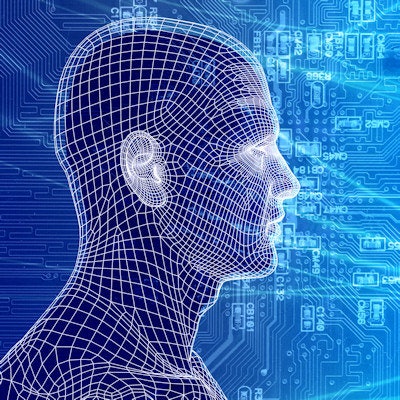
Ask any radiologist about the role of artificial intelligence (AI) in medical imaging and the response will likely cover the gamut of clinical tasks. Should AI handle routine chores that take time but offer little reimbursement? Or should it provide detailed data to solve complex cases and confirm suspected conditions?
 Katherine Andriole, PhD, from Brigham and Women's Hospital.
Katherine Andriole, PhD, from Brigham and Women's Hospital.
The consensus was that AI potentially could be all things to all radiologists, but it will take some time to develop, perfect, and validate the algorithms designed to make the technology infallible.
Interpreting images is the "sexy piece" of AI, but it's not the only thing the technology will be able to do, said Katherine Andriole, PhD, director of imaging informatics at Brigham and Women's Hospital (BWH).
"In my view and at our center, we feel artificial intelligence and data science tools can be used at every point of the imaging chain, from ordering to protocols at the scanner ... helping to write a report, acting as decision support, and all the way back to communicating those results to the ordering clinician," she said.
Boundless opportunity
Certainly, there is no dearth of clinical and diagnostic opportunities for AI. For now, the technology is in its relative infancy, and machine-learning algorithms must be trained to assist in or complete a wide variety of functions with or without a radiologist's oversight.
"I think there are certain things that AI and machine learning are good at right now in the clinical practice," said Dr. Alex Bratt, a radiology resident at Weill Cornell Medicine. "Where it gets a little tricky is where we have -- to use machine-learning jargon -- long-range dependencies among multidimensional datasets."
 Dr. Alex Bratt from Weill Cornell Medicine.
Dr. Alex Bratt from Weill Cornell Medicine.Take a CT scan, for example. The image has three dimensions, and a radiologist must consider the top, middle, and bottom of the scan to form an accurate diagnosis. Likening the task to analyzing multiple chapters in a book, compared with translating one line of text, Bratt said AI has some difficulty in collectively analyzing the individual pieces.
"Then it becomes more complicated when you have prior images, additional medical charts, and other sources of unstructured data that are necessary to come to a correct conclusion," he said. "Our current technology is not able to address those sorts of things, and we will not see most of those functions replaced until we're given a more general AI system."
AI's shortcomings
Given that challenge, AI is far from being a radiological panacea that can correctly identify abnormalities 100% of the time. Its shortcomings are due in part to algorithms that are still evolving to detect an almost infinite number of diseases and conditions.
Dr. Kevin Seals, a radiology resident at Ronald Reagan UCLA Medical Center, brought up Scimitar syndrome as an example. The condition is associated with a congenital heart defect and abnormal lung function. How accurate can AI be for these kinds of rare cases?
"We can find 10,000 images of a pneumothorax and create a machine-learning algorithm that can consistently make that diagnosis," Seals said. "But there are 1,000 more obscure items that can potentially show up on a chest x-ray, like Scimitar syndrome. It can be difficult to create a machine-learning approach that is robust enough to make common diagnoses and literally every diagnosis that a radiologist is responsible for."
 Dr. Kevin Seals from the University of California, Los Angeles.
Dr. Kevin Seals from the University of California, Los Angeles.Andriole expressed similar sentiments, adding that radiology is now in a phase of what she calls "narrow AI."
"We are seeing the detection of lung nodules that may or may not cause morbidity or mortality and missing the corner embolism that can cause significantly more morbidity or mortality," she said.
To help solve AI's deficiencies and make it more of a contributor to the process of image interpretation and results delivery, researchers at BWH are developing an algorithm to analyze diffusion-weighted MR images to assess suspected cases of stroke. After a patient is scanned in the emergency department, the images are automatically processed. If the algorithm confirms a stroke, the file is placed at the top of a neuroradiologist's worklist for immediate evaluation.
Massachusetts General Hospital (MGH) is creating a similar framework to prioritize small, task-oriented chores so they are performed at the appropriate times. The AI function might activate a handful of times during the day or only once or twice a week to direct a radiologist to more-consequential cases.
"Our goal has been to put together a framework that can first host the networks and artificial intelligence tools that will be required to perform different kinds of image analyses," explained Dr. Tarik Alkasab, PhD, service chief for informatics/IT and operations at MGH. "Second, within our clinical practice, we identify the studies that will be fed to each of the different [functions] and get the answers from them. Third, we distribute the answers and take the appropriate steps based on the answers."
Job security
 Dr. Tarik Alkasab, PhD, from MGH.
Dr. Tarik Alkasab, PhD, from MGH.
"Radiology has been leaning into this area, but there are some radiologists who do this with some trepidation," Alkasab said. "There is an opportunity here for physicians and radiologists in particular to take ownership of this process."
So far, however, many AI applications have been "rather single-minded" and directed solely toward the visualization of abnormalities, Andriole said.
"For a while, I think we will see the low-hanging fruit, going after [tasks] that are tedious for a radiologist, such as labeling or dictating a very lengthy MR report," she said. "Those are the areas I think we will see AI being used initially."
As for the future, the panelists are bullish on AI and see a possible ripple effect starting in radiology and expanding to boost patient care at all levels.
"One of the things that will be very exciting is the amount of information contained in pixels as part of an imaging exam. It is potentially tremendous," Alkasab said. "Figuring out diagnoses that were not otherwise apparent or clinical questions that may not otherwise be answered by some pattern on an imaging exam ... is very exciting, although that will take a longer-term approach as AI develops."



















